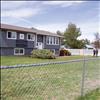Prevent freezing pipes
Hey savvy news reader! Thanks for choosing local.
You are now reading
1 of 3 free articles.
News from Montana State University Extension
BOZEMAN — When the temperatures dip below zero, experts at the office of MSU Extension Housing and Environmental Health to zfield calls about how to prevent freezing pipes or, worse, how to thaw out pipes that are already frozen.
There are several basic ways to keep pipes from freezing, or bursting, in the cold, said Mike Vogel, the Montana State University Extension housing and environmental health specialist.
First, Vogel recommends keeping the house at a steady temperature rather than setting the temperature down to save energy.
“The additional energy cost will be a lot less than paying for a burst water pipe and the cleanup,” Vogel said.
Open all sink cabinet doors to expose warm house air to the water supply and drains. If the washing machine is in a closet, open that door as well. Removing under-sink products and towels or even using a small fan to circulate warm air around pipes and drains can also help.
Vogel warned that one common recommendation – to let a cold-water faucet drip – should be considered with caution, especially if the faucet moves water through pipes located in “cold wall.” The idea is to let water slowly move through the pipes to keep the water from freezing the supply pipes from the water main or pump. While this is typically a good recommendation, if the water drains are exposed to frigid weather, the water could freeze in the drain and cause water to back up in the sink and potentially flood the space.
Water pipes and drains in unheated areas like crawl spaces and garages should be given special attention, Vogel said. They should be insulated so that cold drafts cannot reach the pipes. Make sure vents are closed in crawl spaces. They can be left closed until spring. In unprotected areas where exposed pipes and drains exist, such as in very leaky crawl spaces and under mobile homes, Vogel said heat tape can be used, though only with “extreme caution.”
Heat tape is available at hardware stores for the do-it-yourselfer, but “quite often they are improperly installed,” Vogel added. “If not properly installed they can cause house fires, so following the manufacturer’s instructions is critical. Heat tape should not be put in contact with house materials other than the metal pipe intended and there should be no use of extension cords.”
If you haven’t already done so, make sure outside hoses are disconnected, and, if possible, shut off the water supply to the outside faucet. If this is not possible, protect outside faucets with insulated covers, commonly available at hardware stores.
In general, when temperatures dip below zero, keep a vigil on your pipes. Periodically open a faucet to flush water through them.
Thawing freezing pipes and drains can be complicated and difficult, especially if the pipes are located in wall cavities or hard to reach areas. If pipes do freeze, having an electric heater and a hand-held hair dryer on hand to immediately thaw the blockage to prevent the entire pipe from freezing and bursting, may do the trick.
When thawing pipes, always keep heaters away from combustible materials, never leave space heaters untended or use unvented kerosene or gas heaters in enclosed spaces without adequate ventilation. Likewise, the use of open-flame propane torches in thawing pipes is not recommended. Those with further questions can contact the office of MSU Extension Housing and Environmental Health at 994-3451.















